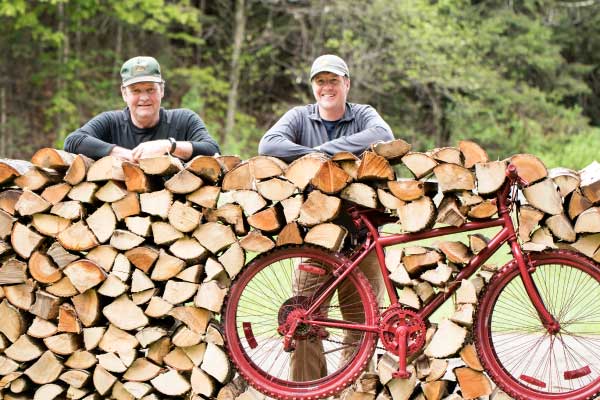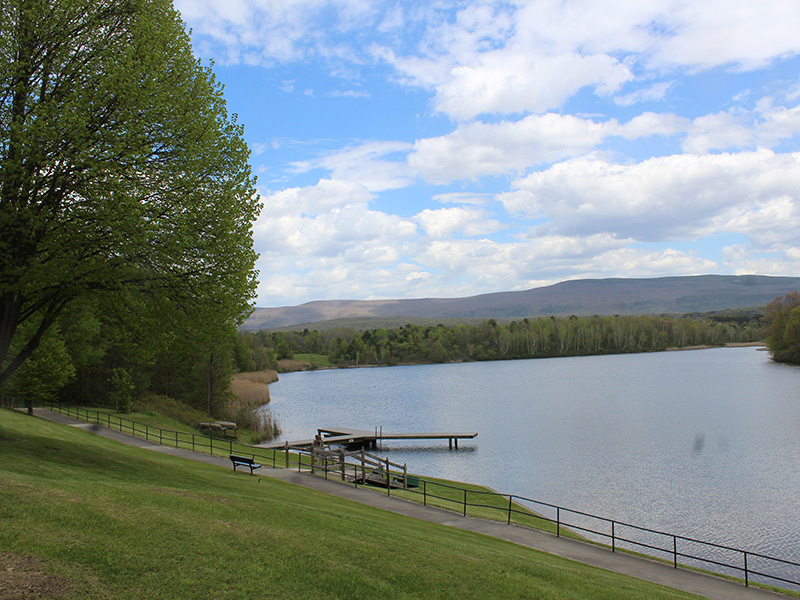Sawmills were East Burke’s first industry, bringing brave and adventurous souls to the northern reaches of Vermont to work, establish farms and, eventually, build the local school, church and meeting house that would become the village of East Burke. It wasn’t until the mid-1900’s that residents began to think about building a tourism industry around the area’s natural resources, including Burke Mountain and nearby Lake Willoughby. Today, brave and adventurous souls travel to East Burke to mountain bike down Sidewinder, a double black diamond on the 10,000 acre, world-renowned Kingdom Trails. But rather than displace the industry on which the town was founded, the trail network and resulting rise in tourism has deepened partnerships with the trail community, landowners, foresters, loggers, and mill owners who collaborate to keep the forest productive and healthy.
“Recreation is one of our forest products now,” said Matt Langlais, forester and president of the Kingdom Trails Association Board of Directors. “It’s an integral part of our working landscape and supports our local economy.” Langlais, an avid mountain biker, points out that the entire Kingdom Trail network began on logging roads. “The locals would go out and ride old skid trails and woods roads,” he said. “They then began to build single track trails with more flow to connect different areas and the Kingdom Trails were born.”
Local economic impact
Today, the network spans across 88 private woodlots, encompassing more than 10,000 acres, and attracts 100,000 visitors annually. “On average, an acre of forestland in Vermont produces $135 of wood value a year,” said Langlais. “The trail system brings in $1,000 per acre in local economic activity, and landowners still harvest the aggregated $135 in wood value every 10-15 years.” Langlais credits those tourist dollars with supporting local businesses, noting that the Kingdom Trails have an economic impact of $10 million a year, and that the area has seen 28 new businesses focused on trail users in the past 10 years. “All that money stays local, supporting small business.”
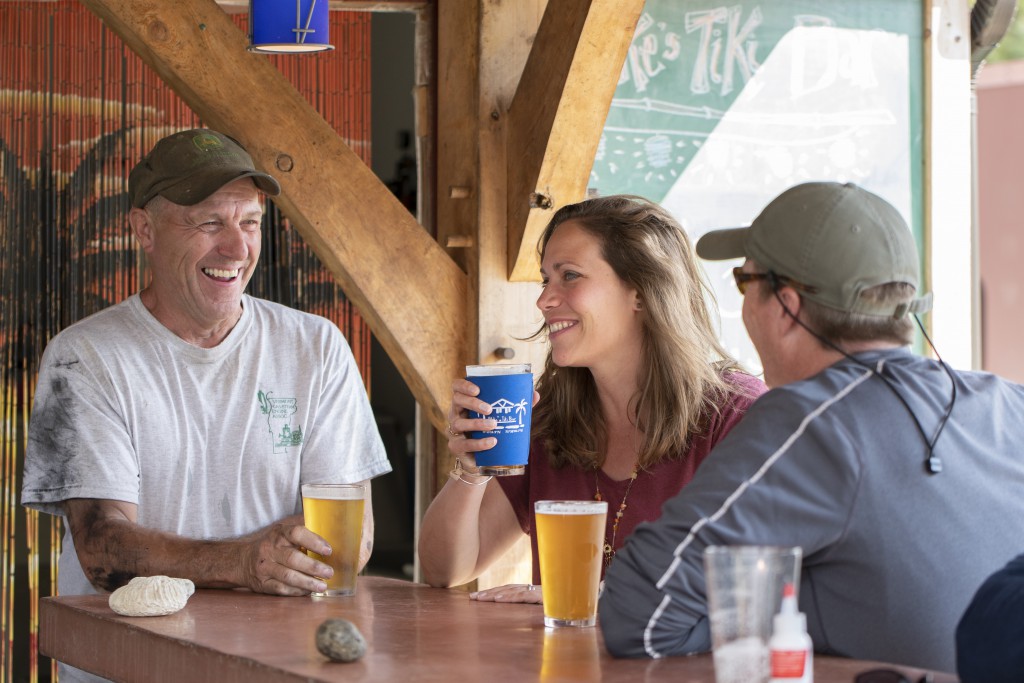
Mike Mathers, owner of Dishmill Forest Products and Property Management, owns one of those local businesses. Located just behind the General Store, Mike’s log yard became a de facto parking lot for the thousands of mountain bikers that pour into town each season. “I watched all those bikers coming into town and thought that if I could somehow earn a dollar for every tourist, I could keep my sawmill profitable,” said Mathers. Not wanting to charge for parking, he built a three-sided structure off the side of his mill, filled a cooler with local beer, and hung up a string of tiki lights. Sure enough, the bikers were more than happy to find a cold beer at the end of the trail. Now an institution in town, Mike’s Tiki Bar is East Burke’s post-ride destination for tourists and locals alike.
Managing forests for recreation
The Dashney trails near the base of Burke Mountain, including Trillium and Moose Alley, were part of an active timber harvest by HB Logging over the past few years. Owner Heath Bunnell, a master logger and avid mountain biker, was careful to plan a harvest that would preserve the integrity of the trails. “We harvest in the winter, when the ground is frozen,” said Bunnell, “so it can be hard to know where the trails are running. It’s important to get everyone together in advance to create a clear plan.” Bunnell met with a forester and representatives of the Kingdom Trails Association to walk through the area and develop a plan that laid out very specific routes for the logging equipment. “We try to cross the trail once at a ninety degree angle instead of crossing at multiple points,” said Bunnell. “It makes clean up easier and lessens the impact on the trail. Aesthetically, people don’t want to see a big mess in the forest. They want clear view lines and clean trails.” For the Dashney area harvest, Bunnell cleared a few small areas off the trail where slash was deposited to create wildlife habitat for songbirds, grouse and small mammals. “The fact is, we live in an area where tourism is the number one business,” said Bunnell, “so we have to manage the forests here with that in mind.”
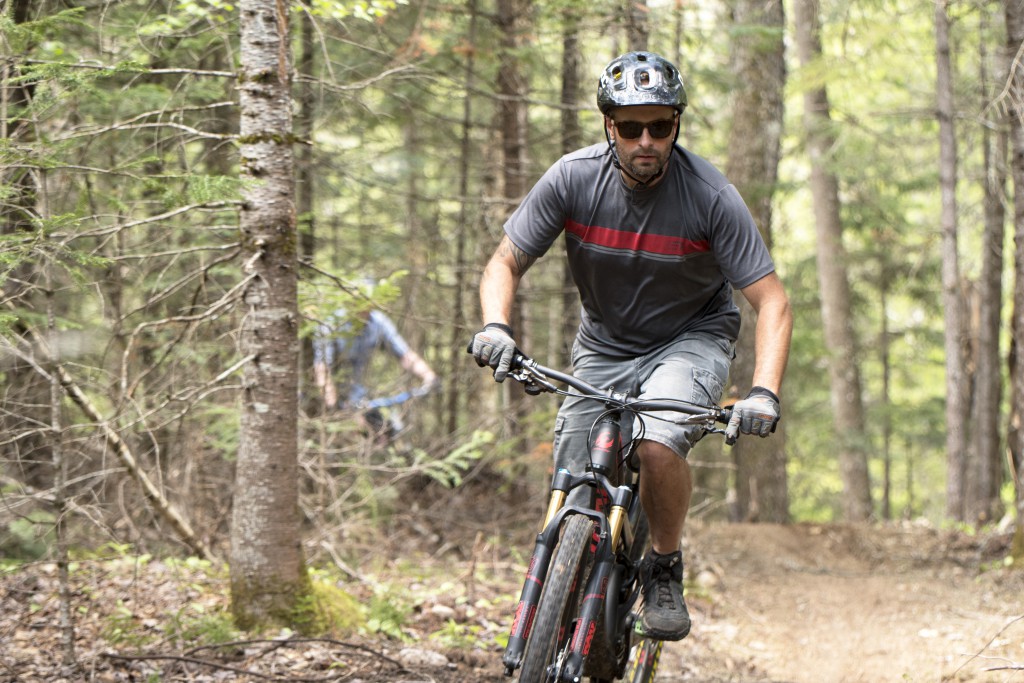
Part of our DNA
And yet, the first business visitors see driving into East Burke is the Timber Resource Group (TRG) on Route 114, a concentration yard where logs are aggregated throughout the winter for eventual transport to mills. As mountain biking season starts up in the spring, Craig Owen, manager of TRG, estimates the yard holds 2.6 million board feet, all of which will be moved out by the end of June by log haulers like Ben Morrison of Morrison Trucking. Further out of town, retired logger Oscar Perkins meticulously stacks 100 cords of firewood into neat walls visible from the road, one of which encompasses an old bike painted bright red. Oscar’s daughter, Heidi, is the organizer of Rasputitsa, a 40 mile mountain bike race held every April in East Burke. “You can’t separate the logging from the biking community,” says Langlais. “The forests are part of our DNA here. We work where we play and play where we work.”
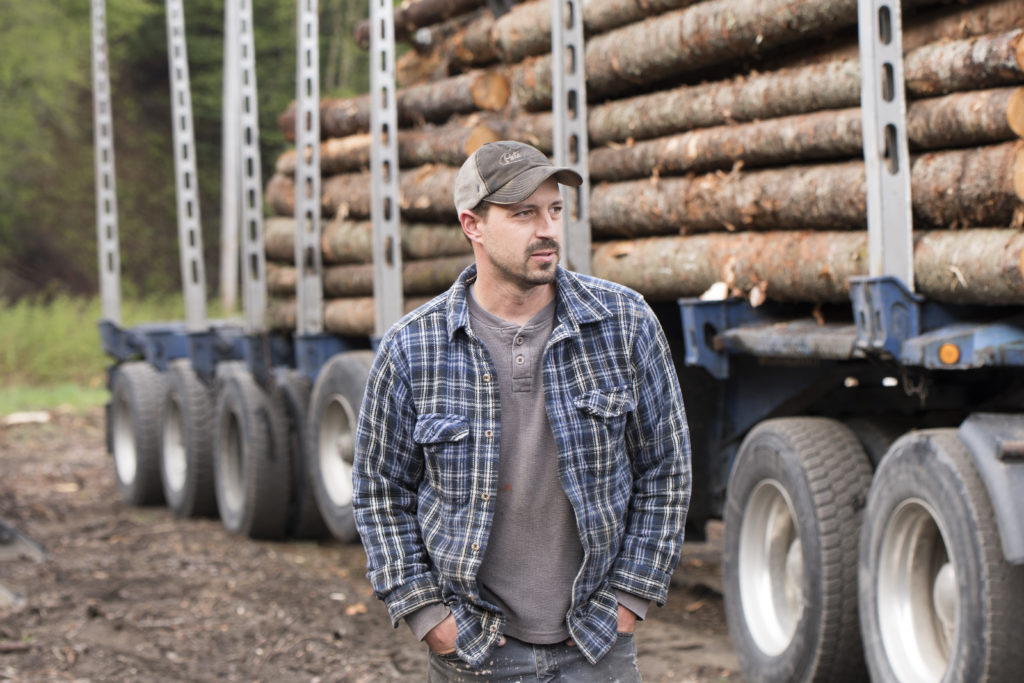
Langlais hopes that the symbiotic relationship between the recreation and forest economics that has developed in East Burke can be a replicated in other parts of the state. Growing interest in sports such as mountain biking and backcountry skiing, and expanding trail networks such as the proposed Velomont Trail that aims to connect Vermont’s six Mountain Bike Association chapters, and work underway in Stowe to build new trails and connect existing trail systems, create opportunities for dialogue. And there is plenty of evidence that those conversations are starting to happen. The clean up of Cady Hill Forest in Stowe, which was devastated by the wind storm last fall, relied heavily on local loggers and foresters working with the Stowe Trails Partnership and Stowe Land Trust to reopen some trails this spring. “Forests and tourists can have a symbiotic relationship here in Vermont,”says Langlais. “Whether it’s board feet, miles of smiles, or both, our recreation and forest products economies depend on forests staying as unfragmented, non-parcelized blocks of healthy forest– that’s the point of common interest.”
This story by the Vermont Sustainable Jobs Fund originally appeared at https://www.vsjf.org/2019/06/17/loggers-mountain-bikers-and-a-tiki-bar-vermonts-new-working-landscape-2/. Photos by Erica Houskeeper. Written by Christine McGowan.

